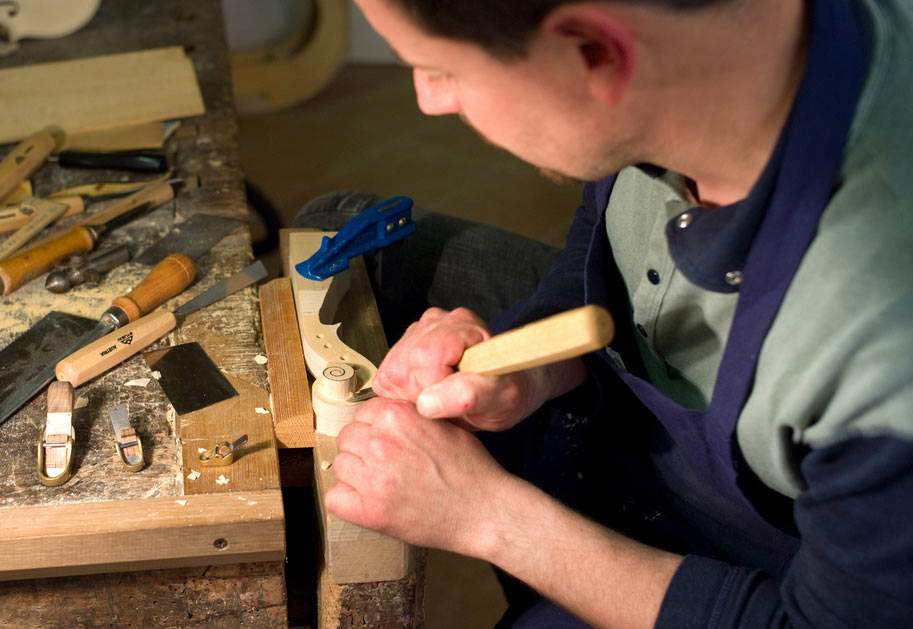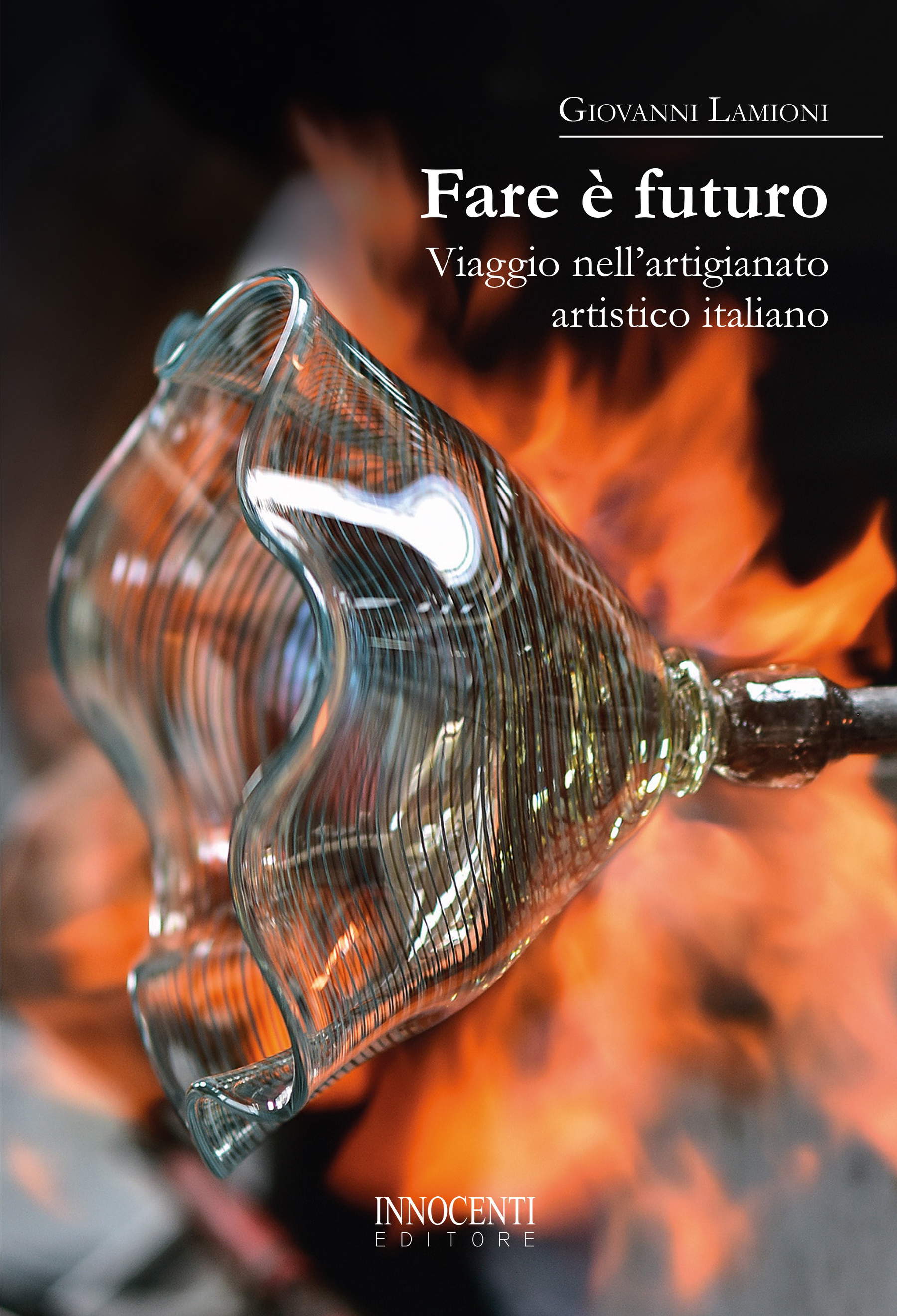A dense volume on the world ofartistic craftsmanship has come out: it is titled Fare è futuro. Viaggio nell’artigianato artistico, by Giovanni Lamioni (president of Artex, Center for Artistic and Traditional Craftsmanship of Tuscany), and published by Innocenti Editore (480 pages, €30.00, ISBN 9788832175561). Produced by the Fondazione Atlante with the contribution of the Fondazione CR Firenze, the book takes the reader on a journey through artistic craftsmanship, a well-known sector but one that represents an important economic and cultural heritage.Giovanni Lamioni’s thesis is that it has become relevant to know in detail the craftsmanship skills of excellence in order to understand and appreciate the value of this sector, which represents one of the strong points of so-called Made in Italy.
These are not easy times for artistic craftsmanship, hit first by the post-2007 economic crisis and now by the Covid crisis, yet, despite the difficulties, the sector has not lost its attractiveness, and it is focusing on the necessary generational change, which is essential for Italian savoir-faire to survive but also because the new digital native generations can help the sector to better face the challenges that the future poses to artistic craftsmanship.Lamioni insists a lot on the importance of knowledge and training. And it is precisely to young people and students that the author intends to address, so that they may know that “world of complex definition,” Lamioni writes, “rich in excellent workmanship, where the transmission of knowledge still takes place on the master-apprentice model, proper to the ancient Renaissance workshops, but which is always in search of quality, improvement and innovation, as illustrated by the many examples of successful businesses started by young artisans.”
In Italy, artistic craftsmanship is a sector of great economic importance, given that it benefits from a fabric of 200,000 businesses employing about 600,000 people (CNA - Confartigianato data): “the quality of the products, the continuous research, the striving for improvement, the deep connection with the territories, sustainability and respect for the environment,” Lamioni again writes in the book’s introduction, “constitute only some of the success factors, which make this sector increasingly attractive for those seeking to build their career path. The affirmation on international markets of the most important companies in the manufacturing industry (fashion, food, motors, boating, textiles) is based on traditional crafts, on know-how, which, however, has been profoundly innovated by the search for quality and digitalization.”
 |
| Wood craftsman at work |
But what, in essence, is artistic craftsmanship? The first chapter of the book attempts to give a definition, although the author himself acknowledges that it is difficult to give precise contours to a rather elusive expression that denotes a field being studied by several disciplines (economics, sociology, anthropology, art history, design, law). But Lamioni nonetheless finds a formula, defining artistic craftsmanship as “the economic sector that includes all activities and professions whose purpose is the production, preservation and enhancement of works or products of craftsmanship that have cultural value.” For a work to qualify as a craft, it must be made by hand or with the help of equipment and machinery but without resulting in identical, standardized or mass-produced specimens. The idea is that each craft work should be original, and have an appreciable technical and aesthetic quality. Sectors of artistic craftsmanship are defined by the International Charter for Artistic Craftsmanship (the text is given in the book’s rich appendix), which identifies them as: custom-made clothing; leather goods; photography; decoration; woodworking; metal and gemstone working; glass working; ceramics working; paper making and processing; musical instrument making; food production and processing; and cultural heritage restoration and processing.
The book is divided into five chapters: the first, introductory, has the function of defining artistic craftsmanship and its values and tracing its history from antiquity to the present day. It then goes on to examine in detail, in the second chapter, the crafts and trades, classified by Lamioni basically following the list in the paper: fashion and clothing, leather goods and footwear, decoration, photography and fine art prints, wood, metals and goldsmithing, musical instruments and violin making, ceramics, glass and crystal, stone and mosaic, paper and papier-mâché, food and wine, restoration, performing arts, mechanical and nautical trades, handcrafted elegance, design and other creative trades and services, and floriculture and gardening. For each of the sectors, typical production centers or centers of excellence are identified (not only the best-known districts, such as those of Trentino woodworking, Cremonese violin making, Ravenna mosaics or Faenza ceramics, but also lesser-known excellences: for example, the wood workshops of Saluzzo, the glass production of the province of Siena, where, moreover, 95 percent of Italian crystal is produced, or the papermaking pole of Frosinone) and the history is outlined in broad strokes. The third chapter focuses on companies and workers in the sector, with an analysis of the industry that relies on official data from trade associations, while the fourth identifies the critical issues and opportunities of the sector in the global economic scenario.
 |
| Book cover |
A section of the fourth chapter also investigates possible connections with tourism and cultural heritage: “crafts, tourism and artistic and cultural heritage,” Lamioni argues, “are closely related by relationships of fruition, sale of products and provision of services. This connection is particularly evident in cities of art, where integrated tourist packages are promoted that include, in addition to stay and visits to museums and monuments, stops at historic craft workshops or laboratories where it is possible for tourists to learn about typical materials and workmanship and purchase handicrafts.” For Lamioni, the relationships between handicrafts and cultural heritage constitute one of the basic elements of the tourist offer of a locality (the author also gives the example of handicraft products sold in museum bookshops ), also because Italy’s image in the world is connected to the concept of culture understood not only as artistic heritage and landscape, but also as a set of knowledge and handicraft and food and wine traditions. Everything contributes, according to Lamioni, to creating that “Italian Style of Life” that sets us apart in the world. Artistic craftsmanship is therefore for the author also an important means of enhancing our territories, especially those less traveled by mass tourism.
The book closes with a chapter devoted precisely to experiences in Italy for the enhancement of artistic craftsmanship, with several contributions from experts in the field. Completing the book are a rich bibliography and a sitography to get to know the sector in detail, and two fundamental texts: the International Charter of Artistic Craftsmanship and Presidential Decree No. 288 of May 25, 2001, which identifies the sectors of artistic and traditional workmanship. A book to address the new challenges the sector will encounter, “new languages and new market trends,” Lamioni argues, “impose an overall rethinking of the sector. Investing in young people means investing in the future and betting on development.”
 |
| A book comes out to learn everything, but everything, about Italian artistic craftsmanship |
Warning: the translation into English of the original Italian article was created using automatic tools. We undertake to review all articles, but we do not guarantee the total absence of inaccuracies in the translation due to the program. You can find the original by clicking on the ITA button. If you find any mistake,please contact us.